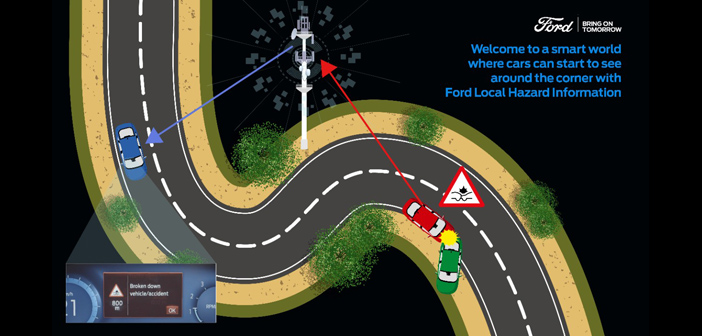Announced this week for the European-market Ford Puma small SUV, Local Hazard Information (LHI) marks a step on the journey toward a connected transportation infrastructure by helping drivers prepare for and potentially avoid dangers on the road.
Based on data provided by Here Technologies, when drivers ahead encounter sudden tailbacks, accidents or spilled loads, the driver behind – and possibly out of sight – is given advance warning. Ford says that this could also apply to everything from freak hailstorms, to sudden flooding, or even landslides.
The triggers for the system come from what is happening in the cars ahead. It could be that airbags have been activated, hazard warning lights are flashing, or windshield wipers are in operation. Previous traffic incident alert systems have relied on drivers to input information in order to generate alerts but LHI works autonomously, without the need for any driver interaction, to generate information and issue warnings.
The vehicle automatically provides updates through a secure connection to the cloud using the FordPass Connect modem. Ford’s technology partner Here Technologies operates the central cloud-based platform that collates information from multiple vehicle brands, governed by a business‑to‑business agreement.
Additional information is sourced from public authority incident databases and traffic reports to provide drivers with further advance warnings including approaching vehicles driving on the wrong side of the carriageway, animals or people in the road ahead, and construction work.
The more cars that are connected to the network, the greater the efficiency of the system, Ford notes. When many vehicles generate the same warning, others in the vicinity receive incident information from the cloud via the cellular network, enabling drivers to reduce speed or take appropriate action.
Hazards are only displayed to a driver – via the dashboard display – if the incident is likely to affect the driver’s journey. LHI is designed to be more beneficial to drivers than hazard information from current radio broadcasting systems, which, Ford claims, often deliver notifications not relevant to them.
“There is no reliance on third party apps,” confirmed Joerg Beyer, executive director, Engineering, Ford of Europe. “This is a significant step forward. Warnings are specific, relevant and tailored to try to help improve your specific journey.”
The system is standard and free of charge for the first year on the new Ford Puma but LHI technology will be rolled out across more than 80% of Ford’s passenger vehicle line-up by the end of this year. Benefits will not be limited to those traveling in Ford vehicles, as information sent can be used to alert drivers of other manufacturers’ vehicles, and vice-versa.



